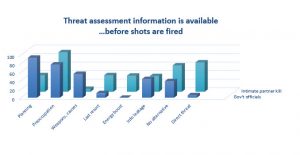For Organizations
HR
HR

From Warning Behaviors… by J.R Meloy, J. Hoffmann, K Roshdi, J. Glaz-Ocik, A Guldimann in Intl Handbook of Threat Assessment by J.R. Meloy and J. Hoffman
Despite news quotes that may say shooting events are “almost impossible to predict” (former HHS secretary Janet Napolitano). The opposite is almost always true.
Threat assessment is the process of determining if the situation is trivial or critical. Prompt action by wise observers can start the threat assessment process. This consists of gathering and analyzing clues, involving law enforcement, getting the opinions of forensic psychologists and assessing the probability of violent outcomes. Management of the situation is best done by a threat assessment team.
The eSleuth part of that process is gathering evidence from computers, phones and social media that can provide a basis for preventative action.
A local school district with sharp staff called us to help investigate a possible threat situation. Parents of a student heard that a teacher, Stephan Kaufman, was inappropriately contacting students. The school district wisely took action that included a forensic analysis of computers used by Kaufman. Fortunately, Kaufman was fired from the district before any students were harmed.
Sadly, months after being separated from the school, he reestablished contact with a student, ultimately murdering her.
Despite having a good threat response that likely saved many students from harm, a life was lost.
Graph adapted from Warning Behaviors… by J.R Meloy, J. Hoffmann, K Roshdi, J. Glaz-Ocik, A Guldimann in Intl Handbook of Threat Assessment by J.R. Meloy and J. Hoffman
Napolitano quote from CBS NEWS
Killer Kaufman story from Seattle Times July 13, 2004 “Sentence cut for Olympia murder under high court ruling”